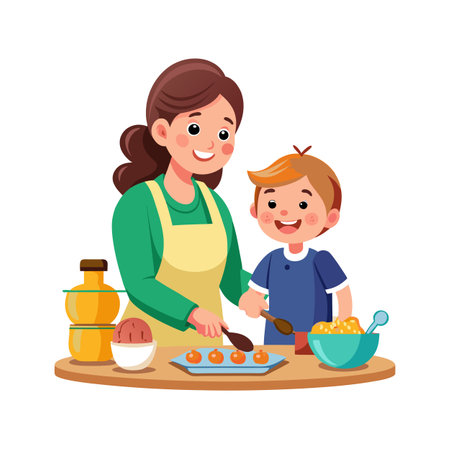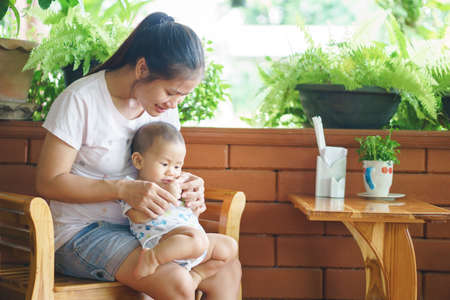Introduction: Why Play Matters in Childhood
In American families, play is more than just a way to fill the afternoon—it’s woven into the very fabric of childhood. Whether it’s building castles out of blocks in the living room, running wild at the neighborhood park, or making up stories with friends, play holds a cherished place in the hearts of parents and children alike. Across generations, Americans have recognized that play isn’t simply about having fun; it’s a powerful tool for growth and learning. In today’s fast-paced world, where academic pressures can sometimes overshadow free time, understanding the true value of play has become even more essential. As we explore the science behind play-based learning, it’s important to remember that playful moments aren’t just happy memories—they are key experiences that shape children’s development in remarkable ways. The journey through what research reveals about play will highlight not only its academic benefits but also its role in nurturing creativity, resilience, and social connection—qualities deeply valued by American families everywhere.
2. What Is Play-Based Learning?
Play-based learning is an educational approach that uses play as the primary method for children to explore, discover, and build essential skills. Unlike traditional models—where lessons are often teacher-directed and focus on memorization or worksheets—play-based learning empowers kids to guide their own experiences through curiosity and imagination. In American classrooms, you might see preschoolers working together to build a block city, negotiating roles in a pretend grocery store, or investigating how magnets work with hands-on materials. At home, parents might encourage children to use dress-up clothes to create stories or set up a “restaurant” with toy food and menus. These playful activities do more than entertain—they lay the groundwork for problem-solving, language development, social-emotional growth, and critical thinking.
Key Differences Between Play-Based and Traditional Learning
| Play-Based Learning | Traditional Education |
|---|---|
| Child-led; teachers act as guides | Teacher-directed; students follow instructions |
| Focuses on exploration and creativity | Emphasizes repetition and rote memorization |
| Integrates social interaction and negotiation | Often individual tasks with limited collaboration |
| Flexible structure; adapts to child’s interests | Fixed curriculum; less room for student choice |
Real-Life Examples from U.S. Settings
In a New York City public preschool, teachers design “learning centers” where kids can choose between art, science experiments, dramatic play, or reading corners—each area fostering different developmental skills through hands-on activity. Meanwhile, in many American homes, parents might notice their children learning math concepts by sorting blocks or practicing communication by role-playing with siblings. These scenarios demonstrate that play-based learning isn’t just fun—it’s scientifically proven to support deeper understanding and lifelong love of learning.

3. How Play Boosts Brain Development
It’s no exaggeration to say that play is like a superfood for a child’s developing brain. Current research clearly shows that when kids are given the freedom to play—whether it’s building with blocks, pretending to be superheroes, or making up silly games with friends—their brains light up in ways that foster growth on multiple levels. Play-based learning isn’t just fun; it’s science-backed magic for cognitive, social, and emotional development.
The Cognitive Power of Play
Let’s break it down: When kids engage in open-ended play, their brains are hard at work forming new connections. Neuroscientists have found that activities like sorting shapes or solving puzzles help develop the prefrontal cortex—the area of the brain responsible for problem-solving, planning, and self-control. For example, when a child tries to build a tower higher than ever before and figures out which blocks will keep it from toppling, they’re practicing critical thinking and spatial awareness without even realizing it.
Learning Social Skills Through Shared Play
Play is also where children learn how to get along with others. Researchers at Harvard’s Center on the Developing Child highlight that collaborative games teach kids how to communicate, share, negotiate rules, and resolve conflicts. Think about a group of kids playing “house”—they might argue over who gets to be the baby or the parent, but through those negotiations, they’re building empathy and teamwork skills that last a lifetime.
Emotional Growth: Building Resilience and Confidence
The emotional benefits of play can’t be overlooked. According to studies from the American Academy of Pediatrics, pretend play and imaginative games allow children to process big feelings in a safe environment. Maybe your child acts out being scared of the dark by pretending their stuffed animal is brave—this kind of role-play helps them make sense of emotions and gain confidence in handling challenges. Over time, these playful experiences build resilience and self-esteem.
In essence, play-based learning isn’t just a way for kids to pass time—it’s an essential ingredient for healthy brain development. As research continues to unfold, one thing remains clear: when we give children space and time to play, we’re helping them grow into smart, compassionate, and emotionally strong individuals.
4. Social and Emotional Benefits
Play isn’t just about fun and games—it’s also a powerful tool for social and emotional growth, especially in the context of American culture where qualities like friendship, resilience, empathy, and self-regulation are highly valued. Research shows that when children engage in play-based learning, they naturally practice and refine these essential life skills.
Through play, kids learn how to cooperate, share, negotiate, and resolve conflicts—all fundamental aspects of building strong friendships. Whether it’s deciding on the rules for a game or figuring out how to include everyone in imaginative play, children are constantly developing their ability to connect with others.
The Role of Play in Building Resilience
Resilience—the capacity to bounce back from setbacks—is another critical outcome of play-based learning. When kids face challenges during play, such as losing a game or encountering disagreement with peers, they have the chance to manage frustration and try again. This process helps foster a growth mindset and perseverance.
Empathy and Understanding Others
Imaginative play often involves taking on different roles or perspectives, which nurtures empathy. As children pretend to be teachers, doctors, or superheroes, they begin to understand what others might feel or need. These experiences translate into better relationships both inside and outside the classroom.
Self-Regulation: Learning to Manage Emotions
Self-regulation is a cornerstone of emotional intelligence and academic success. During play, kids practice managing their impulses—waiting for their turn, following rules, or calming down after excitement. Over time, this helps them develop control over their emotions and behaviors.
Key Social & Emotional Skills Fostered by Play
| Skill | Description | Example in Play |
|---|---|---|
| Friendship | Building connections and cooperating with peers | Team sports or group games |
| Resilience | Bouncing back from setbacks and trying again | Losing a board game but wanting to replay |
| Empathy | Understanding others’ feelings and viewpoints | Pretending to care for a sick toy animal |
| Self-Regulation | Managing emotions and behaviors appropriately | Taking turns during a playground activity |
The science is clear: play-based learning provides the foundation for strong social bonds and emotional well-being—qualities that set children up for success not only in school but throughout their lives in American society.
5. What the Experts and Studies Say
Decades of research in the United States have consistently shown that play-based learning is not just fun—it’s essential for healthy development. Leading organizations like the American Academy of Pediatrics and the National Association for the Education of Young Children advocate strongly for integrating play into early childhood education. Why? Because studies repeatedly find that kids who learn through play develop stronger cognitive, social, and emotional skills.
Major U.S.-Based Studies on Play-Based Learning
One landmark longitudinal study from the HighScope Perry Preschool Project followed children from preschool into adulthood. The results were striking: children in play-based programs showed better problem-solving abilities, higher academic achievement, and even greater career success later in life compared to their peers in more traditional, instruction-heavy classrooms.
Expert Insights on How Play Shapes Development
Child development experts like Dr. Kathy Hirsh-Pasek and Dr. Roberta Golinkoff have spent years exploring how playful learning impacts brain growth. Their research highlights that when kids are given freedom to explore, imagine, and collaborate during play, they build foundational skills in language, math, self-control, and empathy—skills that scripted lessons often fail to nurture as deeply.
The Consensus: Play Matters
Across the board, experts agree: play-based learning isn’t just a nice-to-have—it’s a need-to-have. The evidence shows that play is the natural way children learn best. When educators create playful environments, they’re not just keeping kids entertained—they’re giving them the best possible start for lifelong success.
6. How Parents and Teachers Can Encourage Play
Play-based learning isnt just a theory—its something we can all nurture every day, both at home and in the classroom. As an educator and a parent, Ive seen firsthand how intentional support for play transforms childrens growth, especially when its grounded in research and fits the rhythms of American family and school life. Here are some practical, culturally relevant tips to help you encourage meaningful play.
Create Safe, Flexible Spaces
Whether it’s your living room or a classroom corner, dedicate areas where kids feel free to explore, build, or imagine. Use bins with open-ended toys like blocks, costumes, or art supplies. In my experience, children thrive when theyre trusted to make choices—just keep safety top of mind and let creativity bloom.
Embrace Unstructured Time
American schedules can get packed fast. Prioritize time without screens or structured activities so kids can invent their own games. Research shows that unstructured play supports problem-solving and self-regulation—skills vital for lifelong learning.
Encourage Social Play
Invite friends or classmates over for playdates or group projects. Cooperative play helps children learn empathy and negotiation. As a teacher, I’ve found that group storytelling or building challenges not only foster teamwork but also bring shy kids out of their shells.
Mix Indoor and Outdoor Play
Don’t underestimate the value of outdoor play—even if it’s just the backyard or a local park. Studies highlight that time outside reduces stress and boosts focus. In many American communities, playgrounds or nature walks are accessible ways to engage kids’ bodies and minds.
Follow Their Lead—and Join In!
Let children direct their play; ask open-ended questions instead of giving instructions (“What will happen if…?”). When adults join respectfully—without taking over—it signals that play is valuable. Some of my best connections with my own kids have come from simply sitting on the floor and letting them show me their world.
Connect Play With Learning Goals
If you’re a teacher, link playful activities to curricular themes (like using math games during recess or acting out stories from history). At home, turn daily routines into playful moments—counting groceries together, making up silly songs while cleaning up, or drawing maps for family outings.
Cultivate a Play-Positive Mindset
Above all, celebrate curiosity and experimentation. Praise effort and imagination as much as correct answers. Remember: research confirms that when parents and teachers champion play-based learning, children become more engaged learners and confident problem-solvers—for life.
7. Conclusion: Play as the Heart of Learning
At the end of the day, play isn’t just a fun break from learning—it’s the heartbeat of childhood development and lifelong success. The research is clear: when kids are given time and space to explore through play, they build the cognitive, social, and emotional strengths that set them up for a lifetime of well-being. These aren’t just academic gains; these are life skills—curiosity, resilience, empathy, problem-solving—that help children thrive in school and beyond.
We know from experience and science that kids remember what they discover for themselves. When play is woven into the fabric of early education, children are more engaged, motivated, and ready to take on new challenges. And let’s be honest—play makes learning joyful, sparking laughter, creativity, and genuine excitement.
But keeping play at the center of childhood takes a collective effort. As parents, teachers, neighbors, and community leaders, we all have a role in protecting every child’s right to playful learning. Whether it’s advocating for recess in schools or making time for unstructured play at home, our commitment can make all the difference.
Let’s honor what research—and our hearts—tell us: play is not an extra. It’s essential. When we prioritize play-based learning, we’re investing in happier, healthier kids who are ready to grow into their fullest potential.


